ST. PATRICK
His Confession
and Other Works

St. Patrick
Bishop and Apostle of Ireland
ST. PATRICK
His Confession
and Other Works
TRANSLATION BY
FR. NEIL XAVIER ODONOGHUE

C ATHOLIC B OOK P UBLISHING C ORP.
N EW J ERSEY
NIHIL OBSTAT: Rev. C. Anthony Ziccardi, S.T.D. S.S.L.
Censor Librorum
IMPRIMATUR:  Most Rev. John J. Myers, D.D., J.C.D.
Most Rev. John J. Myers, D.D., J.C.D.
Archbishop of Newark
The Nihil Obstat and Imprimatur are official declarations that a book or a pamphlet is free of doctrinal or moral error. No implication is contained therein that those who have granted the Nihil Obstat and Imprimatur agree with the contents, opinions, or statements expressed.
Homily of Pope John Paul II on His Pastoral Visit to Drogheda, Co. Louth, 1979 used with permission. Libreria Editrice Vaticana.
Texts of the Mass of St. Patrick are provided for devotional use courtesy of the National Centre for Liturgy, St Patricks College, Maynooth, Co. Kildare, Ireland.
The Scripture quotations contained in the Novena are from the New Revised Standard Version Bible: Catholic Edition copyright 1993 and 1989 by the Division of Christian Education of the National Council of Churches of Christ in the U.S.A. Used by permission. All rights reserved.
Cover Icon of St. Patrick in the paperback edition Transfiguration Monastery, Brookline, MA, used with permission.
(T-178)
eISBN 978-0-89942-212-1
2009 Catholic Book Publishing Corp., N.J.
wwwcatholicbookpublishing.com
CONTENTS
FOREWORD
M OST people know of some of the popular traditions associated with St. Patrick such as the casting out of all snakes from Ireland or the use of the shamrock as a symbol of the Trinity. However relatively few have ever read the Saints two surviving works translated in this small book. It is our hope that by reading the Confessio and the Letter to Coroticus and His Soldiers (which modern historians unanimously accept as having come from the pen of St. Patrick himself) many more people can get to meet St. Patrick the man and discover his relevance for the twenty-first century.
The texts have been translated with the aim of letting St. Patrick speak for himself, without encumbering them with many notes or entering into discussions that are only of interest to specialists. A number of other sections have been added to this work to help us meet St. Patrick. The Life of St. Patrick is taken from the 1911 edition of the Catholic Encyclopedia and provides a fuller historical picture drawing on later historical documents and traditions. Likewise the beautiful discourse of Pope John Paul II from his pastoral visit to Drogheda (within the archdiocesan boundaries of Armagh whose bishop is the successor of St. Patrick and Primate of All Ireland) is a very moving reminder from the successor of Peter of the continued relevance of Irelands Apostle. Finally this book ends with a newly composed Novena to St. Patrick based on early Irish sources and the official Mass of St. Patrick for personal prayer.
It is our hope that this little book will help foster devotion to St. Patrick anew and help yet another generation of Christians to join their lives to Christ in prayer as St. Patrick himself did so many years ago as a slave herding sheep on the barren mountain of Slemish.
Fr. Neil Xavier ODonoghue
Kearny, New Jersey
Feast of St. Brigid, Abbess,
Secondary Patron of Ireland
February 1, 2009
I have translated from the Latin original as found in David R. Howlett, The Book of Letters of Saint Patrick the Bishop (Dublin: Four Courts Press, 1994). Those interested in continuing to study St. Patrick and his world are advised to consult the Further Reading list at the end of this book.
1

The Confessio or Confession of St. Patrick
The Confessio of St. Patrick cannot be considered an autobiography in the modern sense. While it would be nice to have a modern autobiography of Irelands national Saint, the Confessio is, perhaps, a still more important document. Although it may not contain as many details about St. Patricks life as we would like, it gives us a window into his soul. What matters for us today is not so much that we might identify the exact location of Bannauenta Berniae or the wood of Voclut. What truly matters, and what the Confessio offers to us, is the possibility to partake of the same divine life that St. Patrick brought to Ireland.
St. Patricks world of the fifth century in Western Europe was an adventurous time coming between the Roman Empire and the birth of the Middle Ages. As the old order of the Empire passed away a new Europe was born. The unity of this new Europe was to be based on a common Christian heritage. As missionaries embarked on their apostolic expeditions, new lands were incorporated into this new Christendom. Ireland was in fact the first new region to be evangelized outside the frontiers of the Roman Empire and so brought into the fold of Christendom. The Confessio provides a fascinating firsthand account of the evangelization of Ireland written by the man who subsequent generations of Irish people would unanimously recognize as their patron saint.
It seems that St. Patrick wrote the Confessio in order to defend himself against accusations made against him in his native Britain. He was probably an old man approaching his final days and unable to travel back to Britain in person (for reasons of age, and because of the needs of his mission). Therefore he introduces the reader to the circumstances that led him to Ireland in the first place as a slave and to his return later on as a missionary bishop. He also takes time to explain some details of the mission itself. As we hear nothing else about the accusations laid against him, it is probable that they came to nothing. However they did have the beneficial consequence of forcing St. Patrick to write this important document.
(1) I Patrick, am a sinner, the most uncultured and smallest among all the faithful, indeed many people consider me to be worthless. It is here that I now find myself, small as I am, among strangers. (2) Here the Lord revealed to me my sense of unbelief so that I could repent of my sins and turn with my whole heart to the Lord my God. God looked at my misery and had mercy upon my youth and ignorance. He watched over me before I knew Him and before I could tell right from wrong: He had compassion for me just as a father has for his son.
(3) I cannot be silent, nor would it be helpful, about all the gifts and graces that the Lord in His mercy bestowed upon me in the land of my slavery. Indeed this is how we ought to behave. After being punished by God we must praise Him and tell of His marvels to every nation under the heavens.
(4) Because there is no other God, nor was there any before Him nor will there be after Him. For He is God the Father unbegotten and ungenerated, who is the source of every beginning and, as we have learned, holds all things in being. We declare that His Son Jesus Christ has always been with the Father. Before time began He was spiritually begotten by the Father in an inexplicable way. Through Christ all things visible and invisible were made. He was made man, He overcame death, He was received into Heaven by the Father
Next page

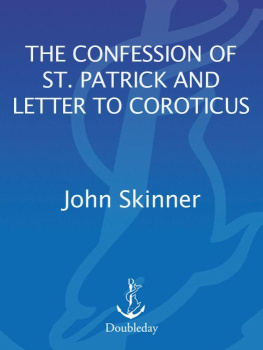
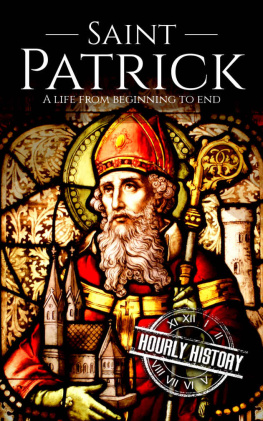



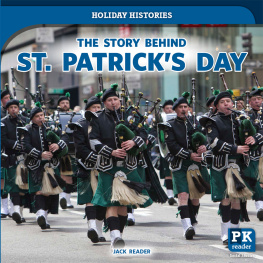
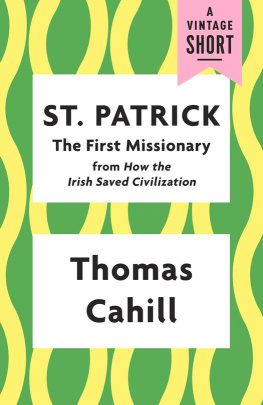

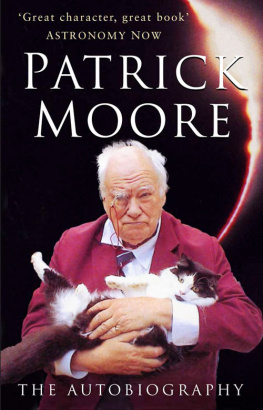


 Most Rev. John J. Myers, D.D., J.C.D.
Most Rev. John J. Myers, D.D., J.C.D.